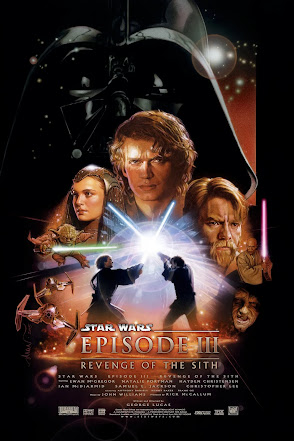When Does "Star Wars: Episode III - Revenge of the Sith" (2005) Take Place?
"Star Wars: Episode III - Revenge of the Sith" is a science fiction film written by George Lucas that released May 19th, 2005. So when is "Revenge of the Sith" set?
 It takes place on the fictional Star Wars timeline in the year:
It takes place on the fictional Star Wars timeline in the year:
We know this because ALL the Star Wars franchise stories are simply set “A long time ago in a galaxy far, far away…”. As stated on Wikipedia, the final scenes of "Star Wars: Episode IV - A New Hope" (1977) depict a space dogfight and "This battle has become known as the Battle of Yavin, and its date is used as a place-marker for events in the expanded Star Wars universe. Events before the Battle of Yavin are marked by BBY ("Before the Battle of Yavin"), and events that occur after are marked by ABY ("After the Battle of Yavin")."
The end of this film depicts the birth of Luke Skywalker and in "Star Wars: Episode IV - A New Hope" (1977) he is 19 years old at the time of the Battle of Yavin.
0 - 19 = -19.
This is the system most fans use as it was introduced first. It originates in a 1996 role-playing game. Wookieepedia includes an explanation entry.
There are also two more fictional calendars created for the Star Wars universe in the 2010s. By the CRC or Coruscant reckoning calendar, year 19 BBY is 7958. It's explained on Wookieepedia. By the Lothal Calendar, year 19 BBY is 3258 LY (for Lothal year). It's explained on Wookieepedia.
If you want to read a scientific attempt at making sense of an actual year on the Gregorian calendar when the Star Wars franchise takes place, there's an excellent article at Wired. Taking the "long time ago" part as gospel but recognizing the time it takes for any "galaxy far, far away" to form with stars and solar systems and planets with intelligent lifeforms. The author, Patrick Johnson, can only place it somewhere between 4.7 billion years ago to the more recent past something like 1,000 years ago. So sometime between 470000000000 BC and 1000 AD.
It is a chronologically early film in the Star Wars universe and can be watched either at its timeline point or between “Star Wars: Episode V - The Empire Strikes Back” (1980) and “Star Wars: Episode VI - Return of the Jedi” (1983) as part of an extended flashback.

19 BBY
We know this because ALL the Star Wars franchise stories are simply set “A long time ago in a galaxy far, far away…”. As stated on Wikipedia, the final scenes of "Star Wars: Episode IV - A New Hope" (1977) depict a space dogfight and "This battle has become known as the Battle of Yavin, and its date is used as a place-marker for events in the expanded Star Wars universe. Events before the Battle of Yavin are marked by BBY ("Before the Battle of Yavin"), and events that occur after are marked by ABY ("After the Battle of Yavin")."
The end of this film depicts the birth of Luke Skywalker and in "Star Wars: Episode IV - A New Hope" (1977) he is 19 years old at the time of the Battle of Yavin.
0 - 19 = -19.
This is the system most fans use as it was introduced first. It originates in a 1996 role-playing game. Wookieepedia includes an explanation entry.
There are also two more fictional calendars created for the Star Wars universe in the 2010s. By the CRC or Coruscant reckoning calendar, year 19 BBY is 7958. It's explained on Wookieepedia. By the Lothal Calendar, year 19 BBY is 3258 LY (for Lothal year). It's explained on Wookieepedia.
If you want to read a scientific attempt at making sense of an actual year on the Gregorian calendar when the Star Wars franchise takes place, there's an excellent article at Wired. Taking the "long time ago" part as gospel but recognizing the time it takes for any "galaxy far, far away" to form with stars and solar systems and planets with intelligent lifeforms. The author, Patrick Johnson, can only place it somewhere between 4.7 billion years ago to the more recent past something like 1,000 years ago. So sometime between 470000000000 BC and 1000 AD.
It is a chronologically early film in the Star Wars universe and can be watched either at its timeline point or between “Star Wars: Episode V - The Empire Strikes Back” (1980) and “Star Wars: Episode VI - Return of the Jedi” (1983) as part of an extended flashback.

